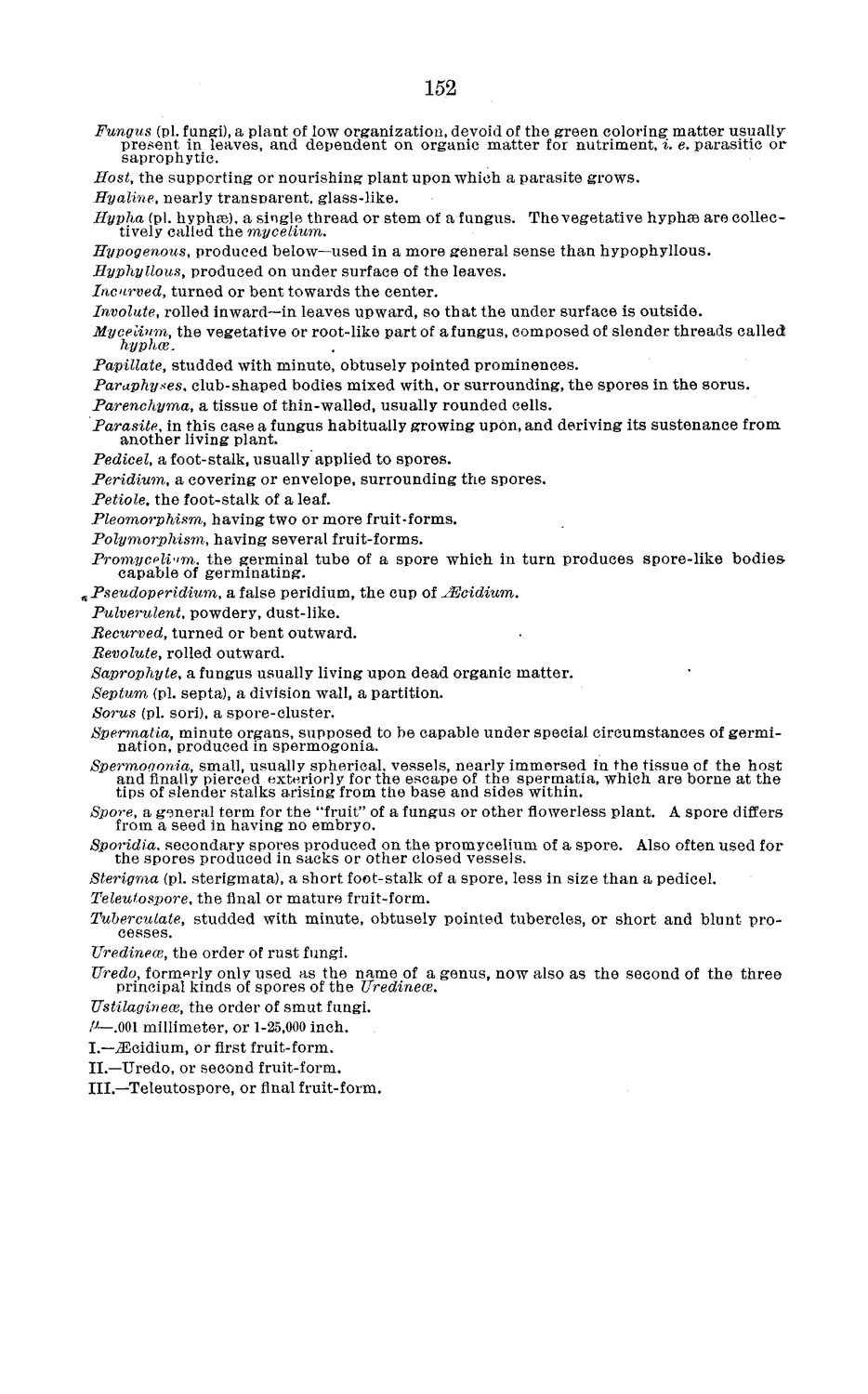| |
| |
Caption: Board of Trustees Minutes - 1884
This is a reduced-resolution page image for fast online browsing.

EXTRACTED TEXT FROM PAGE:
152 Fungus (pi. fungi), a plant of low organization, devoid of the green coloring matter usually present in leaves, and dependent on organic matter for nutriment, i. e. parasitic or saprophytic. Host, the supporting or nourishing plant upon which a parasite grows. Hyaline, nearly transparent, glass-like. Hypha (pi. hyphas), a single thread or stem of a fungus. The vegetative hyphse are collectively called the mycelium. Hypogenous, produced below—used in a more general sense than hypophyllous. Hyphyllous, produced on under surface of the leaves. Incurved, turned or bent towards the center. Involute, rolled inward—in leaves upward, so that the under surface is outside. Mycelium, the vegetative or root-like part of afungus, composed of slender threads called hyphce. Papillate, studded with minute, obtusely pointed prominences. Paraphy*es% club-shaped bodies mixed with, or surrounding, the spores in the sorus. Parenchyma, a tissue of thin-walled, usually rounded cells. Parasite, in this case a fungus habitually growing upon, and deriving its sustenance from another living plant. Pedicel, a foot-stalk, usually applied to spores. Peridium, a covering or envelope, surrounding the spores. Petiole, the foot-stalk of a leaf. Pleomorphism, having two or more fruit-forms. Polymorphism, having several fruit-forms. Promycpli'im. the germinal tube of a spore which in turn produces spore-like bodiescapable of germinating. ^Pseudoperidium, a false peridium, the cup of JEcidium. Pulverulent, powdery, dust-like. Becurved, turned or bent outward. Bevolute, rolled outward. Saprophyte, a fungus usually living upon dead organic matter. Septum (pi. septa), a division wall, a partition. Sorus (pi. sori), a spore-cluster. Spermatia, minute organs, supposed to be capable under special circumstances of germination, produced in spermogonia. Spermoaonia, small, usually spherical, vessels, nearly immersed in the tissue of the host and finally pierced exteriorly for the escape of the spermatia, which are borne at the tips of slender stalks arising from the base and sides within. Spore, a general term for the "fruit" of a fungus or other flowerless plant. A spore differs from a seed in having no embryo. Sporidia, secondary spores produced on the promycelium of a spore. Also often used for the spores produced in sacks or other closed vessels. Sterigma (pi. sterigmata), a short foot-stalk of a spore, less in size than a pedicel. Teleutospore, the final or mature fruit-form. Tubercutate, studded with minute, obtusely pointed tubercles, or short and blunt processes. TTredineoe, the order of rust fungi. Uredo, formerly only used as the name of a genus, now also as the second of the three principal kinds of spores of the Uredinew. TTstilaginece, the order of smut fungi. A'—.001 millimeter, or 1-25,000 inch. I.—iEeidium, or first fruit-form. II.—Uredo, or second fruit-form. III.—Teleutospore, or final fruit-form.
| |